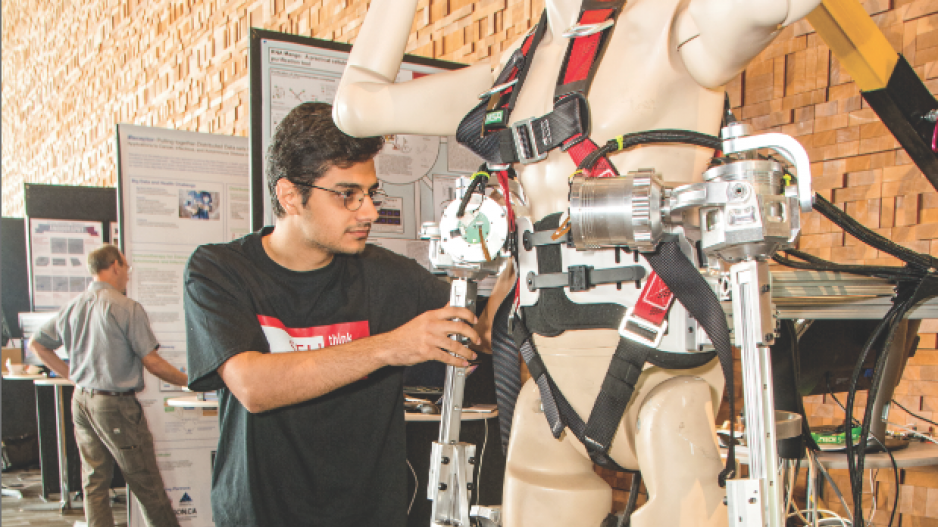Engineers, managers and potential members were among those eager to learn more about the Digital Technology Supercluster (DTS) last week at the B.C. Tech Summit.
The newly born organization was one of five supercluster proposals selected for part of a $950 million total investment dedicated to seeing Canada’s industries continue to grow. It has already grown to more than 350 members and an estimated $1.4 billion in capital including member contributions.
Unfortunately, attendees were left with more questions than answers as some members of the B.C. supercluster presented information rehashed from organizational aspirations and project examples.
The panel was led by DTS co-chairman Greg Caws and included executives at tech companies Microsoft (Nasdaq:MSFT) and Telus (TSX:T), aircraft component manufacturer Avcorp (TSX:AVP) and satellite imaging company UrtheCast (TSX:UR), all of which are founding members and contributors to the B.C. supercluster. They were introduced by B.C. innovation commissioner Alan Winter, who pointed in his opening remarks to the Conference Board of Canada’s findings that the country is entrepreneurial but a relative laggard in business-led research and development.
“Look at Amazon [Nas-daq:AMZN] buying Whole Foods,” said Winter, speaking of the Seattle company’s purchase and attempts to transform the grocery chain. “Let us help you transform your business before Amazon does.”
The presentation provided some details about three areas of DTS focus for the first year and other types of programs to follow in an annual cycle.
Ohad Arazi, general manager of Telus Health Living Labs, provided some insight into work planned for the project’s precision-health area, which aims to modernize and centralize health care.
“One of the visions we have is to leverage the tremendous reach the partners have [in medical technology] and open up that access,” said Arazi.
“We want to put the patient in the centre. Why can’t we have a single login like the MSP [Medical Services Plan] number?”
Also expanded upon was the data-store project area, which will create a four-dimensional live digital globe that benefits large operations in the mining and forestry sectors, and the digital-twinning project area, which involves using virtual and assisted reality to help in production management.
But many key details were left unaddressed or avoided during a short question period, as attendees asked both operational and technical questions, ranging from how the available capital will be allocated and how organizations outside the Lower Mainland will benefit, to whether there are plans to improve digital literacy to help integrate the proposed health-care systems.
Caws said projects would receive funding based on how many members were involved and how impactful they were. He also promised that a portion of the budget was “hard-wired to bring members from outside,” but didn’t elaborate.
Earlier in the week, the DTS announced that Sue Paish had been appointed CEO, after having served as president and CEO of LifeLabs from 2012 to 2017. •




